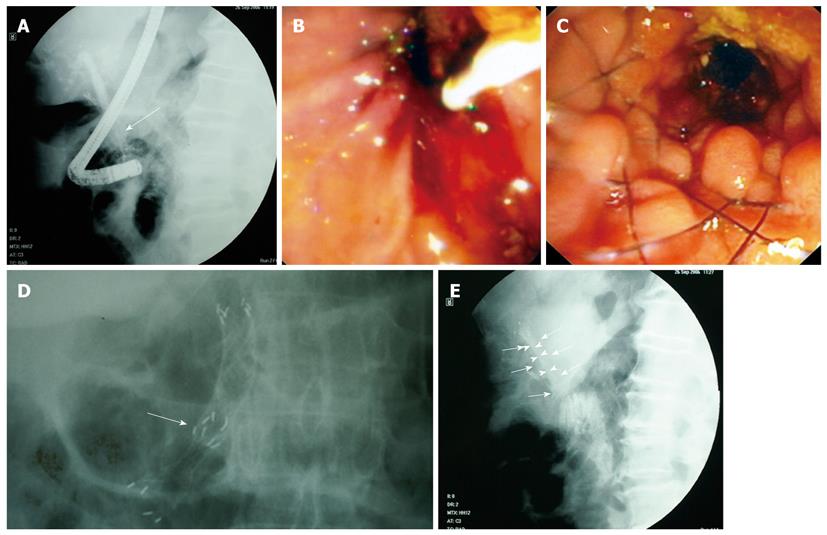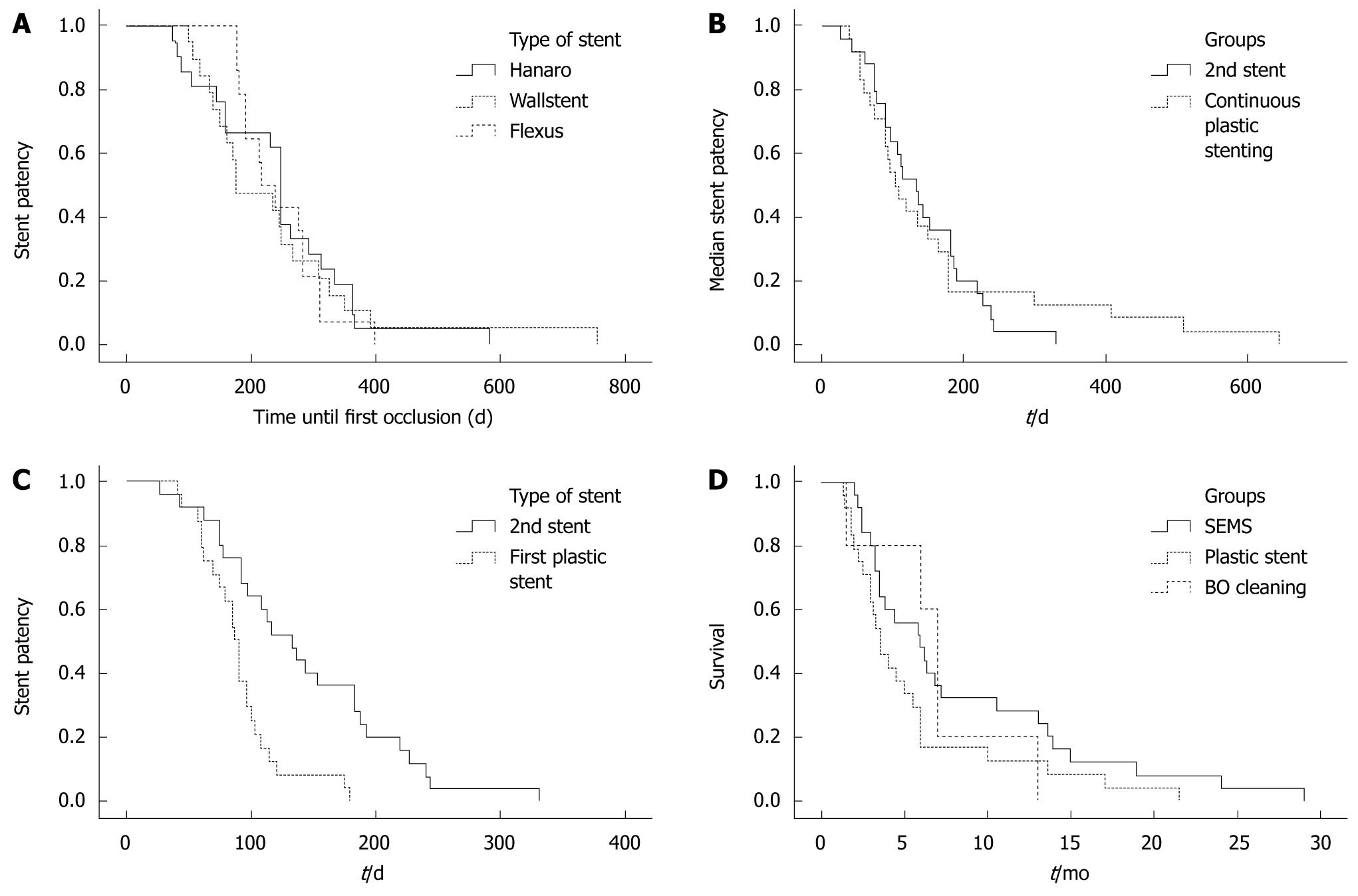Copyright
©2011 Baishideng Publishing Group Co.
World J Gastroenterol. Jan 7, 2011; 17(1): 98-104
Published online Jan 7, 2011. doi: 10.3748/wjg.v17.i1.98
Published online Jan 7, 2011. doi: 10.3748/wjg.v17.i1.98
Figure 1 The reasons for stent occlusion (A, B) and the management of occluded self-expanding metal stents (C-E).
A: Cholangiogram showing self-expanding metal stent (SEMS) occlusion by tumor ingrowth (arrow); B: Endoscopic view showing the distal end of a SEMS completely occluded by tumor overgrowth; C: Insertion of a new SEMS within the distally occluded stent; D: The second SEMS (arrows) was placed to resolve the occlusion by tumor overgrowth; E: Plastic biliary stent (arrowheads) passed through the occluded SEMS (arrows) that had been placed for palliation of pancreatic carcinoma.
Figure 2 Patency of different stent (A-C) and survival after first self-expanding metal stent occlusion (D).
A: Patency of 3 self-expanding metal stent (SEMS) until first occlusion; B: Patency of second SEMS vs overall plastic stent patency; C: Patency of second SEMS vs first plastic stent; D: Survival after first SEMS occlusion.
- Citation: Katsinelos P, Beltsis A, Chatzimavroudis G, Paikos D, Paroutoglou G, Kapetanos D, Terzoudis S, Lazaraki G, Pilpilidis I, Fasoulas K, Atmatzidis S, Zavos C, Kountouras J. Endoscopic management of occluded biliary uncovered metal stents: A multicenter experience. World J Gastroenterol 2011; 17(1): 98-104
- URL: https://www.wjgnet.com/1007-9327/full/v17/i1/98.htm
- DOI: https://dx.doi.org/10.3748/wjg.v17.i1.98










